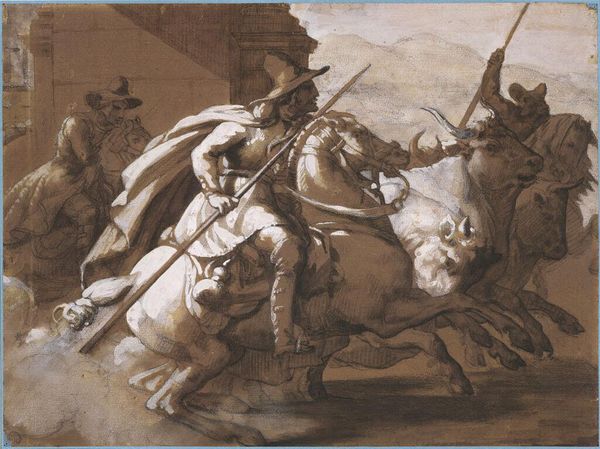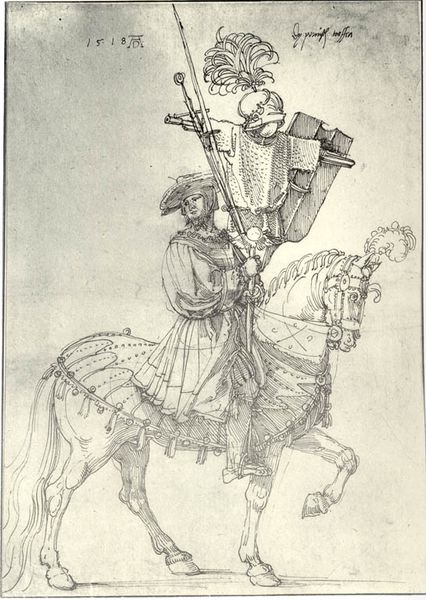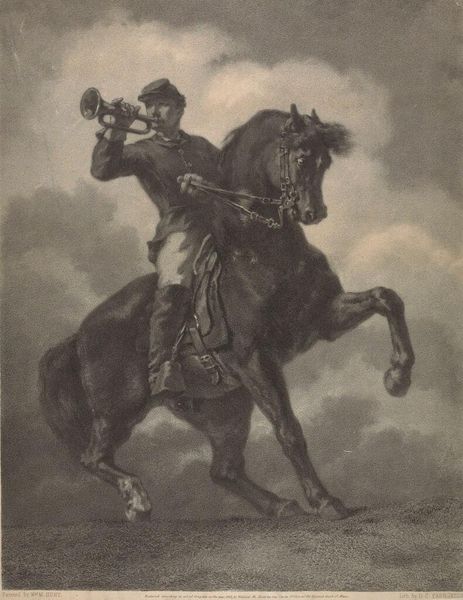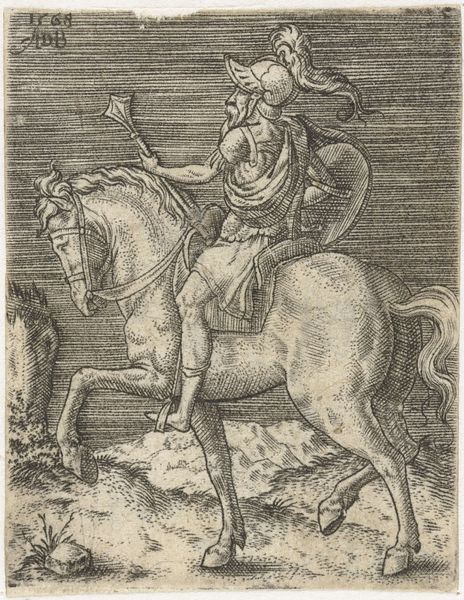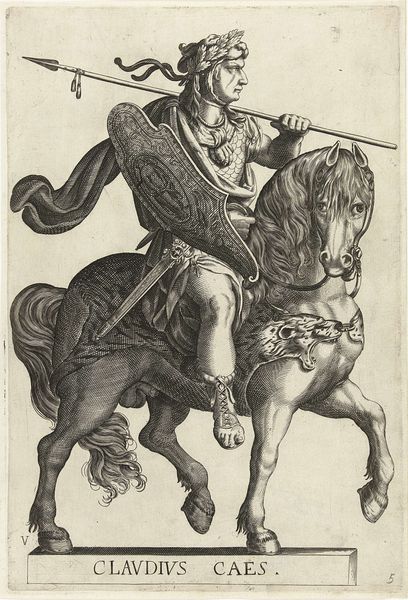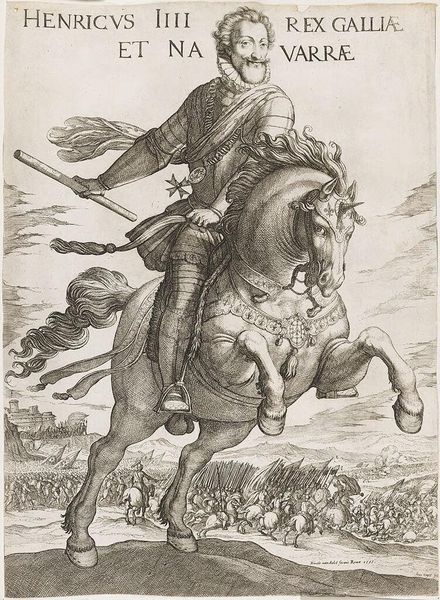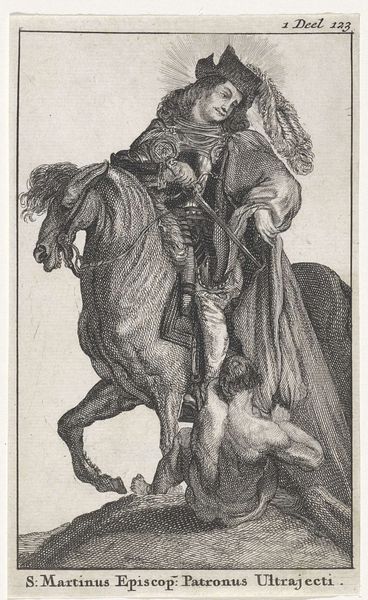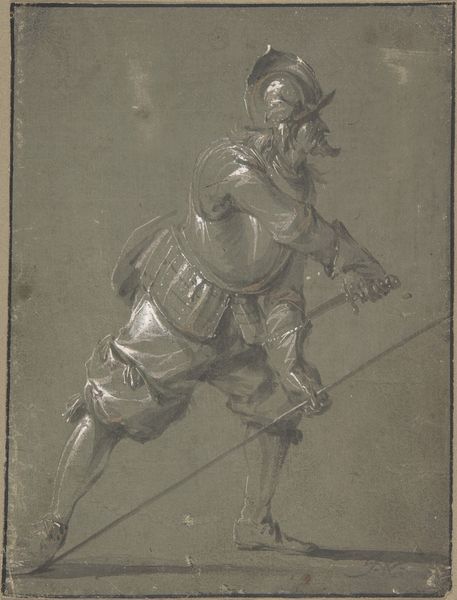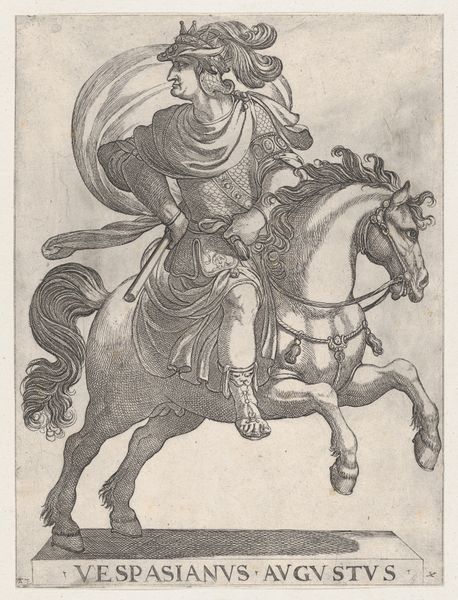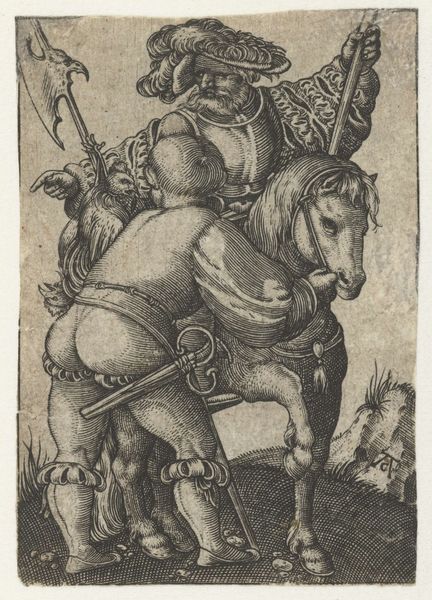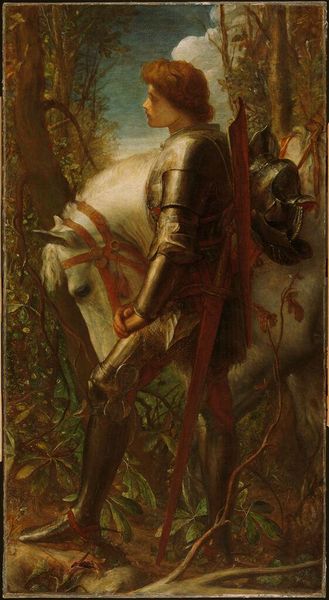
drawing, charcoal
#
portrait
#
drawing
#
figurative
#
landscape
#
charcoal drawing
#
figuration
#
oil painting
#
romanticism
#
orientalism
#
portrait drawing
#
charcoal
#
history-painting
Copyright: Public Domain: Artvee
Editor: Here we have Théodore Géricault’s "Turkish Cavalier in Combat," a charcoal drawing estimated to be from around 1813-1823. The intensity of the cavalier really leaps out at me. How do you interpret this work? Curator: I look at the materiality first. Charcoal is key. Why charcoal? It's immediate, it's gritty, it’s reproducible. It democratizes the image. Géricault is participating in a discourse about Orientalism, but how is he making that discourse available? This isn’t oil paint for the elite. It's charcoal, quickly sketched, maybe reproduced as a print. Think about the consumption of images. Editor: So you're saying the medium itself speaks to the availability and consumption of this kind of exotic imagery? Curator: Exactly. Consider the industrialization of image-making that was taking place. This allows for a wider audience to grapple with those ideas, to internalize or reject the romanticized vision being presented. It shifts away from unique craftsmanship to production. How does that change our understanding of the 'Turkish Cavalier?' Editor: That's a really interesting point. I hadn't considered how the *choice* of material informs the subject matter itself. It also speaks volumes about Géricault’s intended audience, then, as you’re saying? Curator: Precisely. The material allows the artwork to engage with a developing commercial culture. We also need to address issues of labor in that context. Were assistants involved in preparatory sketches, prints made after this work? These processes directly influenced how people engaged with Orientalist imagery, democratizing exoticism. Editor: This has completely changed how I see the artwork. Thank you for pointing that out. Curator: It goes to show that meaning doesn't reside solely within the image, but in its making and distribution, too.
Comments
No comments
Be the first to comment and join the conversation on the ultimate creative platform.
